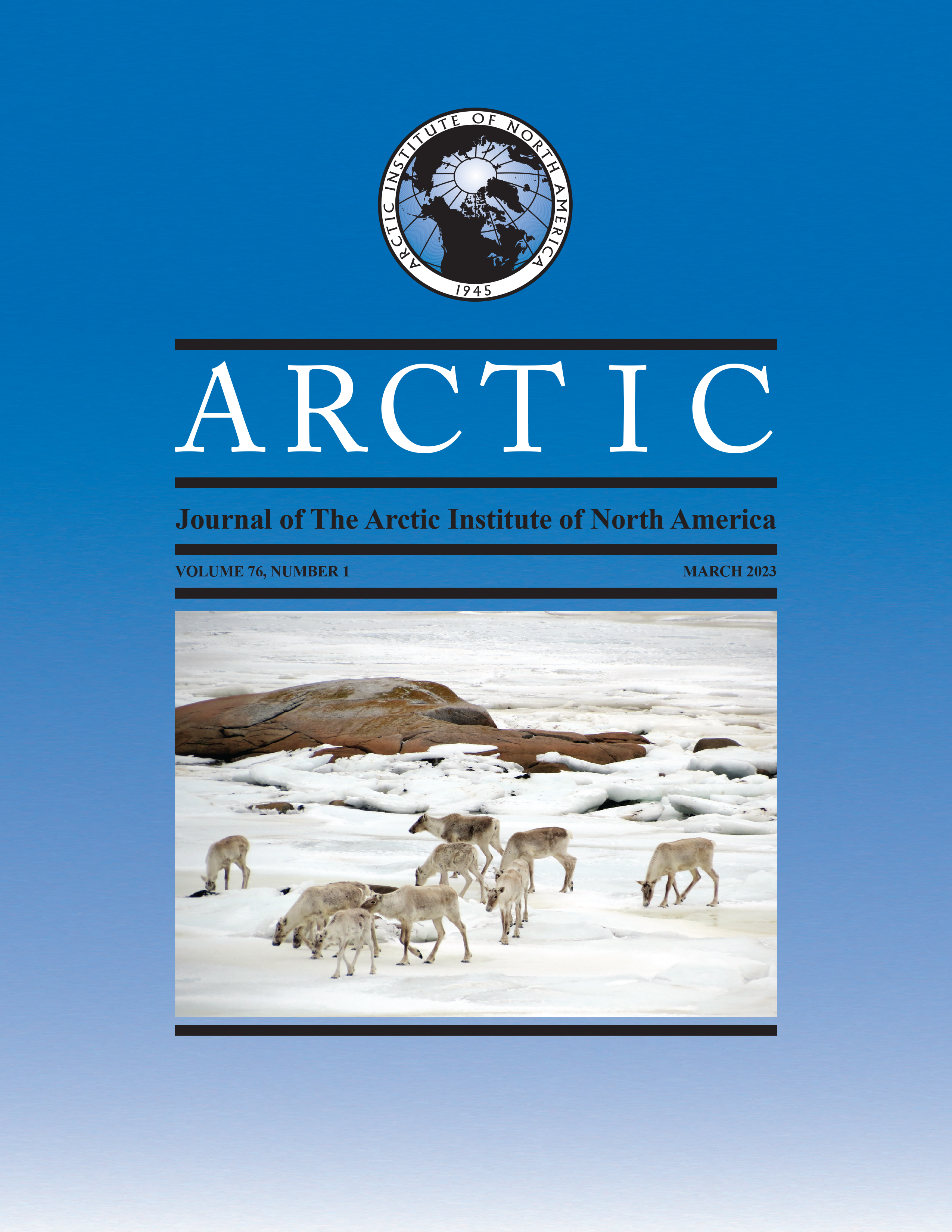An Ongoing Shift in Mammalian Nest Predators of Yellow-billed Loons in Arctic Alaska
DOI :
https://doi.org/10.14430/arctic76945Mots-clés :
Alaska; aliment anthropique; renard arctique; changement climatique; Gavia adamsii; prédation de nids; appareils pour prises de vues en accéléré; renard roux; Vulpes lagopus; Vulpes vulpes; plongeon à bec blancRésumé
La plaine côtière du nord de l’Alaska est une aire de nidification importante pour une variété d’espèces aviaires, où la productivité des espèces nichant au sol peut être grandement influencée par les prédateurs de nids. Récemment, la densité de renards roux (Vulpes vulpes) a augmenté en maint endroit de l’Arctique, vraisemblablement en raison du réchauffement climatique et de la disponibilité de sources alimentaires anthropiques en hiver. Là où ils se retrouvent de manière sympatrique, les renards roux peuvent l’emporter sur les renards arctiques (Vulpes lagopus) plus petits et réussir à les tuer. Il existe un chevauchement alimentaire considérable entre les espèces de renards, mais si le renard roux est un prédateur de nids plus prolifique, le virage caractérisant les espèces de canidés pourrait avoir d’importantes incidences sur les espèces nichant au sol, comme le plongeon à bec blanc (Gavia adamsii). Nous avons examiné les photographies accélérées de 186 nids de plongeons à bec blanc du nord de l’Alaska prises entre les années 2008 et 2015 ainsi qu’en 2019 afin de repérer la présence de renards et d’autres prédateurs de nids, en plus de quantifier la prédation des nids en fonction des espèces. Même s’il y a des photographies de renards roux et de renards arctiques à proximité de nids, nous avons pu constater que toutes les prédations réussies de nids de plongeons à bec blanc étaient attribuables au renard roux, le deuxième plus grand prédateur de nids de plongeons à bec blanc après le goéland bourgmestre (Larus hyperboreus). Les renards arctiques photographiés aux nids de plongeons à bec blanc n’ont pas réussi à déplacer les plongeons en période d’incubation. Plusieurs sources de données suggèrent que la prédominance des renards roux a augmenté dans l’Arctique alaskien au cours des trois dernières décennies, un changement qui est susceptible d’avoir des incidences négatives sur le succès de la nidification des plongeons à bec blanc, voire d’autres oiseaux aquatiques plus volumineux.



